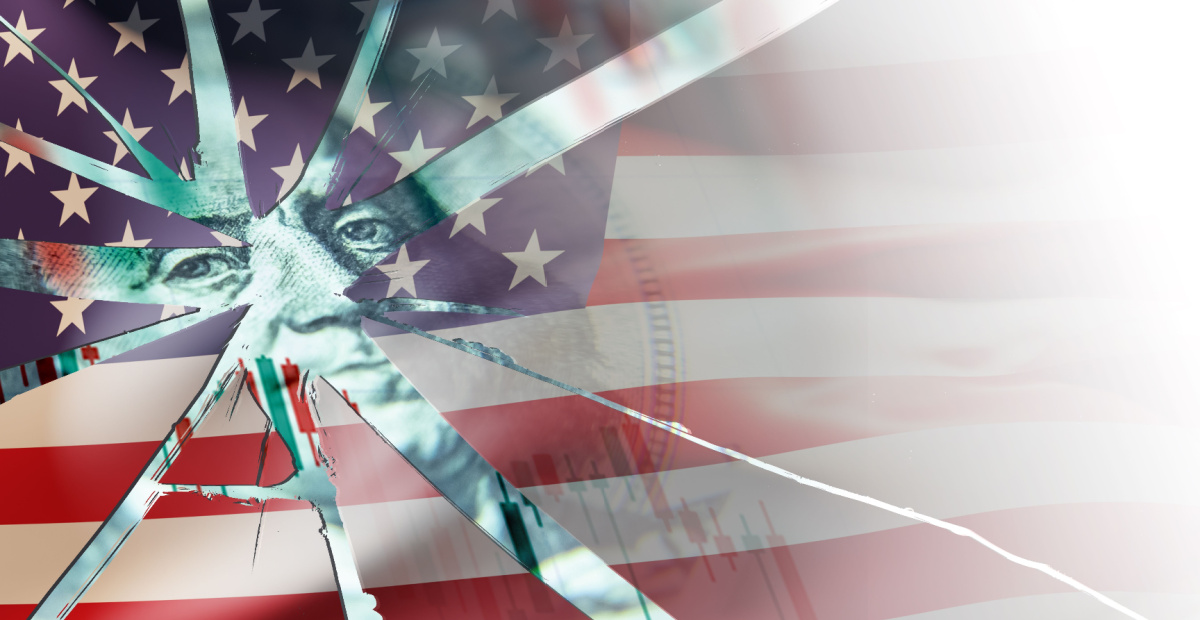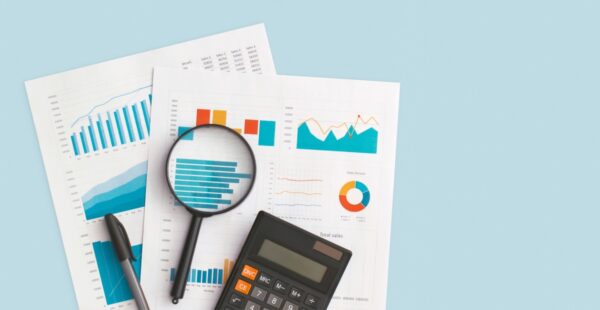Markets, fund managers react to US election result

With the U.S. presidential race officially called and Donald Trump emerging victorious, fund managers have placed their bets on the economic implications of and market reactions to the election result.
While some managers suggested the outcome was “a complete surprise”, says Stephen Dover, Head of the Franklin Templeton Institute, others indicated that the market reaction was as expected: “a confirmation of the moves over recent weeks… rather than another, new paradigm”, according to Co-Chief Investment Officer of PGIM Fixed Income, Gregory Peters.
Financial Newswire provides a breakdown of the responses across several asset classes and monetary policies.
Market sentiment agrees that the election result has delivered the positive growth necessary to “unleash powerful advances in US equity markets, Treasury yields and the US dollar”, Dover says, with crucial policy changes incoming. Managers are also in agreeance that “plans for higher tariffs and reduced immigration could lead to slower growth, higher inflation and higher interest rates in the coming years”, as stated by Nancy Pilotte, Vice President at American Century Investments.
Equities
Fund managers have quickly moved to compare the current performance of markets in the wake of Trump’s recent win with the movements seen in the wake of his 2016 win.
“Small caps and cyclicals were standout performers post-2016, on the back of domestic growth optimism and deregulation, with Trump initially delivering on pro-business policies. Similar sentiment today could favour sectors linked to US domestic growth, aligning with broader market forecasts. Small caps may benefit as confidence around economic growth builds – a perspective reinforcing a more inclusive expansion (i.e. broader growth),” Global X ETFs Investment Strategist, Billy Leung. said.
“Despite higher bond yields, equity markets have rallied on the expectation of corporate tax relief under a Trump Administration and / or the absence of any increased corporate taxes that may have been instituted under a Harris Administration,” GSFM investment specialist, Stephen Miller, said.
“Markets have responded as expected to Donald Trump’s victory – higher Treasury bond yields, firmer equities, and a stronger dollar. It is a re-run of 2016. In 2016, 10-year Treasury yields bottomed in July and rose 40 basis points (bp) before the election. They shot up another 85bp in the month or so after the election, reaching 2.65% from 1.80% on the day of the vote. After that they traded sideways to lower, until rising again in late 2017 to November 2018, peaking at 3.20%. On a net basis from the low below the election to the peak two years after Trump’s victory, yields rose by 180bp,” Chris Iggo, Chief Investment Officer, Core Investments at AXA Investment Managers, said.
“The chief risk for US and global equity markets is rising bond yields. To the extent that higher yields represent stronger growth expectations, the outcome is less problematic. But to the extent they reflect a rise in inflation expectations or a crowding out of investment due to projected large fiscal deficits, higher yields could cap overall equity returns,” Franklin Templeton’s Dover said.
“Prior the US stock market opening, US equity futures were up 2%–4%, led by the broader Russell 2000 Index and keyed by strong rotation to mid-cap stocks. Asian and European equity markets responded with more mixed results.”
Fixed Income
The intersection between US bond yields, equity markets and the election outcome were pronounced among fund managers’ market expectations.
“Initial market moves are risk-on globally, and rates wider in the US in anticipation of a Republican sweep. This is in anticipation of a tax and regulatory friendly administration with little resistance likely to come from the other branches of government. Rates are wider on an administration that is perhaps relatively more deficit-agnostic than the alternative. As deficit relative to GDP in the US increases, the cost to borrow rises, hence the widening,” Mitch Reznick, Group Head of Fixed Income – London at Federated Hermes, said.
“In Europe, in a less obvious way, risk is rallying in sympathy with the US and the rest of the world. We are expecting spreads to trade through recent tights. With the rate curve steepening, the moves in rates are somewhat better for High Yield credit vs Investment Grade, as the rate move on the long end is likely to eclipse spread tightening, given the limited ability of spreads to move tighter in a material way due to the pre-existing tight levels. European Investment Grade can benefit from a combination of spread tightening and bunds tightening. Overall, equity-like risk in credit is performing because it less sensitive to the rate-move wider.
“Interest rates in the US have gapped wider than predicated in anticipation of wider deficits in the US. This will raise the cost of financing for investment, particular for longer-dated borrowing used for capital investments. Since the transition to a low-carbon economy requires significant investment in new technologies and innovation, this could be a headwind for new investment. In the US, there is a risk that the new administration will rollback catalytic pieces of legislation and we are unlikely to see the SEC create regulation that would reinforce the disclosure of corporate or financial risks related to climate, environmental or social factors.
“Having said that, many US companies are moving in the direction of sustainability to capture growth and minimise risks, independent of what the federal government is doing. Although potentially higher cost of capital is a headwind, the structural tailwinds for sustainable finance remain quite strong, particularly in Europe. There, regulation, shifting value chains and changing consumer sentiment are the responses to the need to mitigate risks associated with a deteriorating planet. This will continue to drive sustainable finance in Europe. While the market for GSS bonds may not be as strong in 2025 as it was in 2024, it will remain robust.”
“Within emerging markets, despite a stronger dollar and higher treasury yields, we note that the reaction has not been as broadly negative as feared, for instance, high-yield credit markets have largely performed well given expectations of stronger risk markets, while sovereign debt markets such as Ukraine are rallying on the expectation of expedited peace negotiations under a Trump administration,” Thys Louw, Emerging Market Fixed Income Portfolio Manager at Ninety One, said.
“Looking ahead, several key events over the next few days could help shape the short-term outlook for emerging markets in the face of trade and tariff uncertainty, namely the Chinese National People’s Congress (NPC) meeting, which will give guidance on the size of Chinese fiscal support; the November US Federal Reserve meeting; and finally a 30-year US treasury auction, which will be important in providing an anchor for longer dated treasury rates.”
“US bond markets sold off sharply, with 10-year US Treasury yields rising to 4.47%, up nearly 20 basis points on the election news,” Dover said.
Emerging Markets
Building off the unexpected reaction from the fixed income space within emerging markets, investment managers indicate they may just be biding their time.
“Initial market reaction in emerging markets to Trump’s victory has been measured. With some weakness in China and Mexico due to concerns over potentially higher tariffs, but strength in markets which might benefit from a shift in supply chains such as India and Malaysia,” Archie Hart, Emerging Markets Equity Portfolio Manager at Ninety One, said.
“Longer term emerging market performance will remain dependent on the complex interaction between economic growth, currencies, interest rates and geopolitics with much of this being anchored on longer term economic trends. The American President is a very powerful figure, but we suspect the laws of economics may prove even more powerful in the long run. In the medium-term market performance will be driven by policy implementation and execution, much of which is still to be determined.”
Commodities, Cryptocurrency and Currencies
The status of gold and other commodities like oil as ‘safe havens’ were also heavily pronounced in the lead-up to both the 2016 and 2024 elections, where Trump was victorious. Investors will be eagerly awaiting some indication of how commodities will react, especially amid mixed market commentary.
“Oil rallied in 2016, benefiting from Trump’s pro-energy stance, which favoured traditional energy sectors. A similar approach today could support fossil fuels and infrastructure, with potential easing of regulatory barriers allowing for production expansion. However, external risks like OPEC’s decisions and China’s slower economic recovery could limit oil’s upside potential, even with US policy support,” Global X’s Leung, said.
“Gold declined after the 2016 election as investors turned from safe-haven assets amid stronger risk appetite. With renewed fiscal stimulus and pro-growth policies, a similar shift away from gold may occur, as higher growth and inflation expectations typically reduce safe-haven demand. Nonetheless, tariff and geopolitical uncertainties could intermittently sustain demand for gold as a hedge.
“Following Trump’s 2016 win, the USD appreciated sharply against major currencies, driven by expectations of fiscal stimulus, tax cuts, and infrastructure spending, which boosted USD demand. This may recur with a Republican-led administration, supporting the USD, especially in trade-exposed regions.”
“The outlook for commodity prices is mixed, in our view. Support for America’s oil industry and the prospect of growing supply could put further downward pressure on crude prices. So, too, could a stronger dollar. But stronger growth could lead to higher demand, a positive for energy and basic materials sectors,” Dover said.
“The US dollar has jumped about 2% against the yen and euro. Cryptocurrencies have advanced strongly, up by 7%–9%. Oil prices have dipped by about 1%.”
Fiscal Policy
Having already served a presidential term after the 2016 election, markets are well-versed in Trump’s immediate post-election moves and the ripple effects these can have on pre-existing fiscal policy, especially in crucial areas like taxes, trade, energy, inflation and immigration.
“A related risk is that the Fed could halt its easing of US monetary policy and might even perform a U-turn with rate hikes. Rate increases could happen if accelerating growth leads to higher inflation. In that scenario, bond markets will watch closely for signs the Trump administration might try to curb the Fed’s policy-making independence,” Dover said.
“A final risk is US tariffs. On the campaign trail, Trump strongly advocated for sweeping, large tariffs. If that policy is realized, it could harm US and global growth (including via global trade war escalation), increase measured inflation, sap consumer purchasing power, and crimp corporate profits via higher input costs. It is more likely, therefore, that the Trump administration will use tariffs as a bargaining tactic in international trade and security negotiations.”
“The markets will expect widening fiscal deficits under the Republicans, which we believe will push bond yields higher for at least two reasons. First, fiscal expansion will boost demand and hence growth. As a result, the Federal Reserve (Fed) will likely ease less than had been anticipated. Second, rising deficits will increase debt issuance. Yields on 10-year Treasuries are likely to push toward 5% over the course of the next few months.”
“A GOP sweep greatly increases the odds that most, if not all, of the provisions of the Tax Cuts and Jobs Act of 2017 will be extended before their scheduled expiration at the end of 2025. Additionally, on the campaign trail, Trump advocated for ending the taxation of Social Security benefits, tips and overtime pay. He proposed lowering the corporate income tax to 15% from 21% for domestic manufacturers,” MFS Investment Management’s Michael Dembro, Lead Strategist, Strategy and Insights Group, and Jamie Coleman, Senior Strategist, Strategy and Insights Group, said.
“US presidents have a great deal of discretion when it comes to trade policy. On the stump, Trump called for imposing reciprocal tariffs on US imports equal to the duties other countries levy on US exports. He called for a 10% to 20% universal baseline tariff on all US imports and a 60% tariff on imports from China. Additionally, he called for placing tariffs on certain auto imports from Mexico.
“Trump has been a strong advocate for increasing US domestic energy production and has vowed to lift hurdles to oil and gas production and distribution while promoting power plant construction. He is far less inclined than the outgoing administration to subsidize a green energy transition.
“Trump aims, in part by imposing import levies, to bring manufacturing jobs back to the US. He’s also promised to ban companies that outsource US-based jobs from securing government contracts. He plans to reduce immigration and to deport unauthorized immigrants. While mass deportations are thought by many to be inflationary since it would shrink labor supply, such an action would also reduce economic growth, potentially offsetting the inflationary impulse.”
American Century’s Pilotte also shared some concerns over Trump’s policy views.
“Trump aims to work through Congress to lower drug prices and accelerate efforts to privatize Medicare, including reducing hospital payments for outpatient care. He also supports legislation to cut Medicare Advantage payments to insurers and reduce Medicaid spending while implementing work requirements for Medicaid recipients. These measures are intended to decrease government spending on health care and encourage more private sector involvement in providing health services.
“Trump emphasises increasing national defence spending while reducing or eliminating financial and arms support for Ukraine in the war against Russia. He also prioritizes strong U.S. support for Israel and would pressure NATO members to spend at least 2% of their gross domestic product (GDP) on defence.”
Should the election really matter when it comes to market movements?
Josh Snyder, GQG’s global investment strategist, offers a diverse perspective discounting the perceived effects of elections on market movements.
“As investors, what do we really care about when it comes to elections? At GQG, we are macro aware. We do not view macro as a tool for telling us what to buy, but it can be a good tool in terms of telling you what to avoid. That’s where elections come in,” he said.
“Hopefully, they give us a better understanding of the rules of the game – something that’s critical to investing – and something that, in our view, investors ignore at their own peril. Therefore, at least as it relates to the US, because the rules of the game have been fairly stable over time, whoever is in the White House generally hasn’t mattered.
“If we look at 50+ years of data, going back all the way to the bygone period of 1969, in absence of a major economic decline (and generally multiple declines), US stocks, as measured by the S&P 500 or the MSCI USA Index, have generally gone up. Now we know that past performance is not indicative of future success, so obviously things can change.
“At the end of the day, we have a couple of key tenets at GQG: we’re much more focused on preparation over prognostication and our view is that earnings are like gravity. Show us where the earnings are going, and ultimately, we believe the price will map to that. To the extent that possible policy changes, from tax cuts to regulatory changes or tariff implementation actually impact earnings growth, we’ll react to the data. Simultaneously, if short-term headlines increase volatility for names where we believe the fundamentals are unchanged, we’re happy to harvest that volatility as well.
“While everyone wants the next best stock idea, maybe the current idea already exists. Because it’s also difficult to ascertain what’s already in the price, investing – in our view – is about adjusting the sails, not predicting the wind. To us, the biggest risk to a business is often execution, rather than elections.”











The PHD in economics is the scariest. How many academics actually understand the real world
Money is leaving at a slower rate with this being considered by AMP management as a positive. Australia's Money Pit…
"Our recently launched digital advice solution for AMP Super members is providing simple, intuitive retirement advice at no extra cost.”…
Assistant to Bill Shorten...FoFA, A time when dozens of submissions were made, 90 odd submissions ranging from clients be sent…
Only way to get that 1.25 times back will be to move clients from Brighter Super into their SMA on…